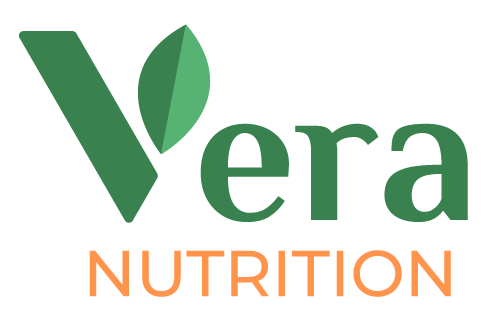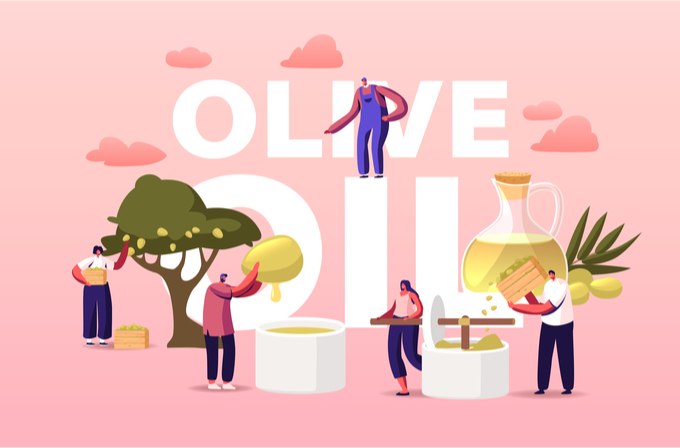There’s so much information on this topic and it changes all the time. A few years ago we considered coconut oil as the answer, before that – canola oil and now we bet on ghee and olive oil. Oh goodness, how to make sense of all this? Refined or unrefined? What is the smoke point? What happens if I use the wrong oil? It does seem like an overwhelming topic, I hear you. Let’s figure out what healthiest cooking oils really are and why.
What is a cooking oil?
In English cooking oil can be applied to both vegetable and animal fat used for cooking (using heat or not). Basically it’s a broad term applied to edible oils. For starters, let’s talk about vegetable oils. Vegetable oil is 100% fat derived from nuts, kernels or seeds of plants.
Refined VS unrefined oil?
Unrefined oil is the one obtained purely from extraction. Refined oil is usually extracted with the help of solvents and then it is subject to other processes like heating, deodorizing and bleaching to remove its specific taste, color and all the impurities. These are mostly done to extend oil’s shelf life.
You know extra virgin olive oil. Well actually virgin and extra-virgin is the oil grading that is usually applied to olive and coconut oils since both have established quality standards. Let’s look closer at the olive oil. Extra virgin olive oil must be cold pressed with less than 0,8% of free oleic acid, and virgin – less than 2% (1). Cold-pressed means it is extracted mechanically without heating. Free oleic acid content basically reflects how soon it will go rancid plus its organoleptic qualities (better taste and smell).
Pure, raw or unrefined oil WITHOUT virgin or extra virgin grading or cold-pressed labeling probably means that this oil was extracted through chemical processes with the help of solvents. The most common solvent used in chemical oil extraction is hexane. It is generally toxic and indeed traces of hexane can be found in oil but they usually don’t exceed the safety threshold (2).
Smoke point
You probably think that extra-virgin or cold-pressed oils are the best choice since they are not heated or processed. Indeed, they keep maximum of their initial nutritious content! But the choice of a cooking oil will mostly depend on its smoke point.
Each oil has its smoke point which is a temperature at which an oil starts burning and potentially oxidizing, producing harmful substances. Those harmful substances include cancirogens and free radicals (3). Food made from with such oil is not safe, and neither is cooking with it as its harmful fumes can be inhaled during cooking. But please, don’t freak out. Oxidative processes are happening all the time. The best you can do is to pay attention when it happens next time and do your best to prevent it. Also, most of the harmful substances are formed during repeated heating. And the solution is simple here: don’t reuse oil.
Here are smoke points of most commonly used oils:
- Extra-virgin olive oil : 160-190 °C (320-375 °F)
- Sunflower oil, unrefined : 107 °C (225 °F)
- Sunflower oil, refined : 225 °C (435 °F)
- Canola oil, refined : 190–232 °C (375-450 °F)
- Soybean oil, refined : 234 °C (453 °F)
- Avocado oil, unrefined: 190-205 °C (375-400 °F)
- Grapeseed oil : 195 °C (383 °F)
- Butter : 150-175 °C (300-345 °F)
- Clarified butter (ghee) : 230 °C (445 °F)
- Lard : 190 °C (375 °F)
- Beef tallow : 205 °C (400 °F) (4, 5)
Most oils have a range as a smoke points because it is actually a complicated thing to measure in real-life conditions. So they are not always accurate. That’s why on the internet you can find significantly different variations for many oils.
Oxidative stability
Since the smoke point isn’t always accurate, nowadays, some researchers think that it would probably be more accurate to talk about oil’s oxidative stability. Oxidative stability takes into account oil fatty acid composition and how rich in antioxidants it is. According to some studies, extra virgin olive oil (EVOO) has the highest oxidative stability (6). Well, I find it reasonable to take into account both oil’s smoke point and its oxidative stability. Better safe than sorry.
Oil fatty acid composition and nutrition
So, oil oxidative stability depends on its fatty acid profile. Let’s look at it in more detail.
All oils are composed of saturated, monounsaturated and polyunsaturated (omega 3 and omega 6) fatty acids in different proportions. Even though saturated fat is considered the least healthy option, oils high in this type of fat (coconut, palm oil and animal fats) are most resistant to heat. Monounsaturated fat-rich oils (olive and avocado oil) are also pretty resistant. Whereas, oils rich in polyunsaturated fatty acids (omega-3 rich canola, flaxseed, walnut oils as well as omega-6 rich sunflower, sesame and soybean oils) are very unstable. Thus, they are NOT SAFE for heating, UNLESS refined.
You might have heard about another concern on cooking oils, which is trans fat. Indeed, some refined oils contain several percent of trans fat in them as a result of their prolonged heating (7). But since you use 1-2 tbsp of oil at a time it shouldn’t be a problem.
On top of different fatty acids, we can get other benefits from oil in the form of vitamins and antioxidants. The most common vitamins found in oils are E and K. Vitamin E acts as a powerful antioxidant. EVOO is particularly rich in antioxidants including phenolic compounds that might be even protective against cancer (8).
Balancing between benefits and harm
So our choice of oil will primarily depend on the COOKING TEMPERATURE. For the oils used raw, their nutrition will come first. For oils that are heated, their smoke point and oxidative stability will be a priority. It is also important to mention, that not all oils cost the same. For example, good-quality EVOO is expensive, so I’ll give you my healthiest oil options for different budgets.
The healthiest cooking oils
The healthiest oils for salad dressings and raw usage: all unrefined oils. The best choices are oils rich in monounsaturated fatty acids (omega-9) like EVOO and avocado oils along with oils rich in omega-3 like flaxseed and nut oils. If these options are not available or costly, then go for any unrefined oils (yes, you should vary those too). And what about butter? Yes! Add butter and cream in prepared meals.
The healthiest oils for low-medium heat cooking (steaming-sauteing at 100-150°C / 215-300 °F): EVOO is perfect. Avocado and coconut oils work as well. Not available? Go for any available refined oil like sunflower or canola.
Regarding oils for high-heat cooking (pan-frying and deep-frying at 140-190°C / 285-375 °F): the highest temperatures require use of particular oils. Virgin oils have a lower smoke points and some research shows that EVOO is even suitable for deep-frying (9) but I personally prefer not to risk it. In this case animal fats come into play. And clarified butter or ghee is my best choice. Clarified butter can be easily made at home from usual 82% butter. (Here’s a detailed recipe) If clarified butter is not available then go with refined oils. Also there are special oils for deep-frying or cooking at high temperatures in supermarkets.
What about baking? Baking temperatures usually vary from 160 to 210°C (320°F-410°F). But here it gets tricky since ovens has a larger heating space and oil doesn’t have a direct contact with the heating source. So, I personally stick to my favorite French baking recipes with butter. Feel free to use EVOO or other oils depending on the recipe. The only oils to avoid are unrefined oils rich in omega 3/omega 6 with low smoke points.
Btw, forget about margarine and spreads if you haven’t already!
Keep your oils safe
Oils oxidize and thus go rancid quicker as a reaction to heat, light and oxygen. Store your bottle of oil in a cool place (NOT next to the stove:). Preferably, buy tinted bottles (dark glass) and do not leave them open. Also, each oil has a best before date, keep it in mind. It’s better to buy smaller oil bottles that will serve you around 1 month to always have fresh oil.
Practically speaking
Cooking with oils is tricky. You should consider oil’s smoke point, its oxidative stability and nutrition when choosing the healthiest option. For raw usage and dressings use unrefined cold-pressed oils. The healthiest options are EVOO, avocado oil, and omega-3 rich flaxseed and nut oils. For low-medium temperatures go for EVOO, avocado and coconut oils. And for high-heat cooking choose animal fats high in saturated fat like clarified butter or lard. Or go for refined oils. Don’t reuse oils, keep them in a dark cool place and vary your oils. It’s so important to enjoy your meals, so don’t be afraid to try something new!
Sources
- https://ec.europa.eu/info/food-farming-fisheries/plants-and-plant-products/plant-products/olive-oil_en
- https://openaccesspub.org/ject/article/622
- https://www.ncbi.nlm.nih.gov/pmc/articles/PMC4029104/
- https://en.wikipedia.org/wiki/Smoke_point#cite_note-35
- https://www.masterclass.com/articles/cooking-oils-and-smoke-points-what-to-know-and-how-to-choose#chart-of-oil-smoke-points
- https://www.aboutoliveoil.org/evoo-most-stable-cooking-oil
- https://www.hsph.harvard.edu/nutritionsource/2015/04/13/ask-the-expert-concerns-about-canola-oil/
- https://pubmed.ncbi.nlm.nih.gov/11905662/
- https://pubmed.ncbi.nlm.nih.gov/20678538/




